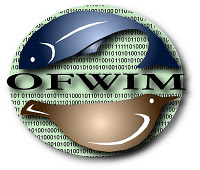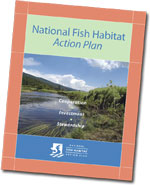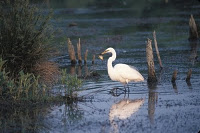Gulf of Mexico coastal fisheries populations have tremendous value in ecological, economic, and social terms. As a result, each coastal state within the
NBII Central Southwest Gulf Coast Information Node (CSWGCIN) region is involved in coastal fisheries management. Each agency that collects fisheries-independent (non-harvest) data in the Gulf of Mexico coastal waters does so according to agency-specific missions and goals; this leads to differing sampling methodologies and database formats. Each separate database tells part of the story about the state of Gulf of Mexico coastal fisheries resources. Combining them into a cohesive and complete data record is a difficult, yet important, task.
The goal is to combine coastal fisheries monitoring data from multiple Gulf states into an online mapping application. As a first step,
CSWGCIN has acquired fisheries-independent monitoring data from the
Texas Parks and Wildlife Department (TPWD)
Coastal Fisheries Division and made the data accessible through the
Texas Coastal Fisheries Mapping Application. The
TPWD coastal fisheries resource database dates back to 1977 and is based on a randomized sampling method. The database includes information on a host of estuarine species sampled using a variety of sampling gears: bag seine, shrimp trawl, gill net, and oyster dredge. Each gear type is used by
TPWD to sample particular habitat types, species, and life history stages. Bag seines collect juveniles and small adult species that inhabit estuarine edge habitat along shoreline and marsh fringes. Shrimp trawls collect small- to medium-sized species inhabiting bottom habitat of the open bay. Gill nets capture large adult specimens that move along the shore. Oyster dredges are used to collect shellfish from oyster reef habitats.
Data include catch numbers, lengths of specimens captured, hydrological data (e.g., salinity, dissolved oxygen, water temperature), and metadata describing location, date/time, and other characteristics (e.g., depth, sampling effort, etc.) of the sampling event. The
TPWD coastal fisheries database is unique in that it contains data for all species captured in the various sampling gears, regardless of recreational or commercial importance.
Data were analyzed to determine time series trends in relative abundance for multiple estuarine fisheries species. Indicator species for this project were chosen based on commercial, recreational, or ecological importance. The list below provides examples of species included in the mapping application:
Common Name | Latin Name |
Atlantic croaker | Micropogonias undulatus |
Bay anchovy | Anchoa mitchilli |
Black drum | Pogonias cromis |
Blue catfish | Ictalurus furcatus |
Blue crab | Callinectes sapidus |
Brown shrimp | Farfantepenaeus aztecus |
Gafftopsail catfish | Bagre marinus |
Southern flounder | Paralichthys lethostigma |
“The goal is to combine coastal fisheries monitoring data from multiple Gulf states into an online mapping application.”
Abundance was reported as relative abundance (the proportion of individuals of one species relative to the total number of individuals of all species captured at one location or time). Relative abundances were displayed in an online mapping interface and made available to users via the
CSWGCIN portal.
In addition to viewing the time series fisheries abundance data in an online mapping interface, users can view physical characterization data for each estuary. The mapping interface provides hydrological information detailing average salinity, dissolved oxygen, turbidity, and water temperatures for the eight major bay systems in Texas. The data portal also includes an option to download the coastal fisheries data, hydrological data, and supporting metadata.
 Five new datasets have been submitted to the Biogeographic Information and Observation System (BIOS). BIOS is the California Department of Fish and Game hosted infrastructure in the state to provide access from a single location to key biological datasets for habitat conservation planning and other activities by researchers and managers. Four datasets from CalTrans San Diego of vegetation mapping and sensitive species surveys from 2006 were submitted as well as a dataset of Wandering Skipper survey data conducted by the San Diego Association of Governments (SANDAG).
Five new datasets have been submitted to the Biogeographic Information and Observation System (BIOS). BIOS is the California Department of Fish and Game hosted infrastructure in the state to provide access from a single location to key biological datasets for habitat conservation planning and other activities by researchers and managers. Four datasets from CalTrans San Diego of vegetation mapping and sensitive species surveys from 2006 were submitted as well as a dataset of Wandering Skipper survey data conducted by the San Diego Association of Governments (SANDAG).






